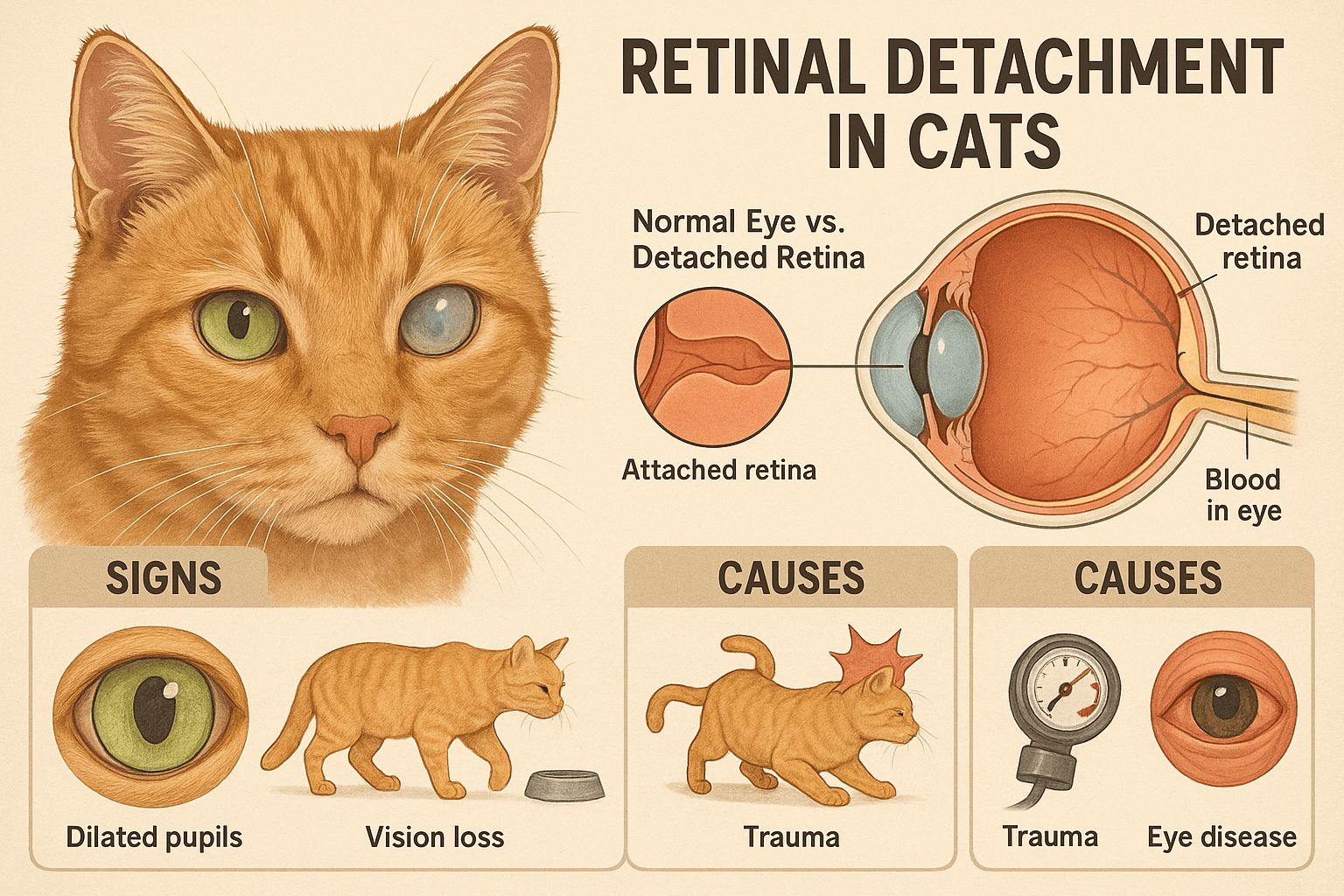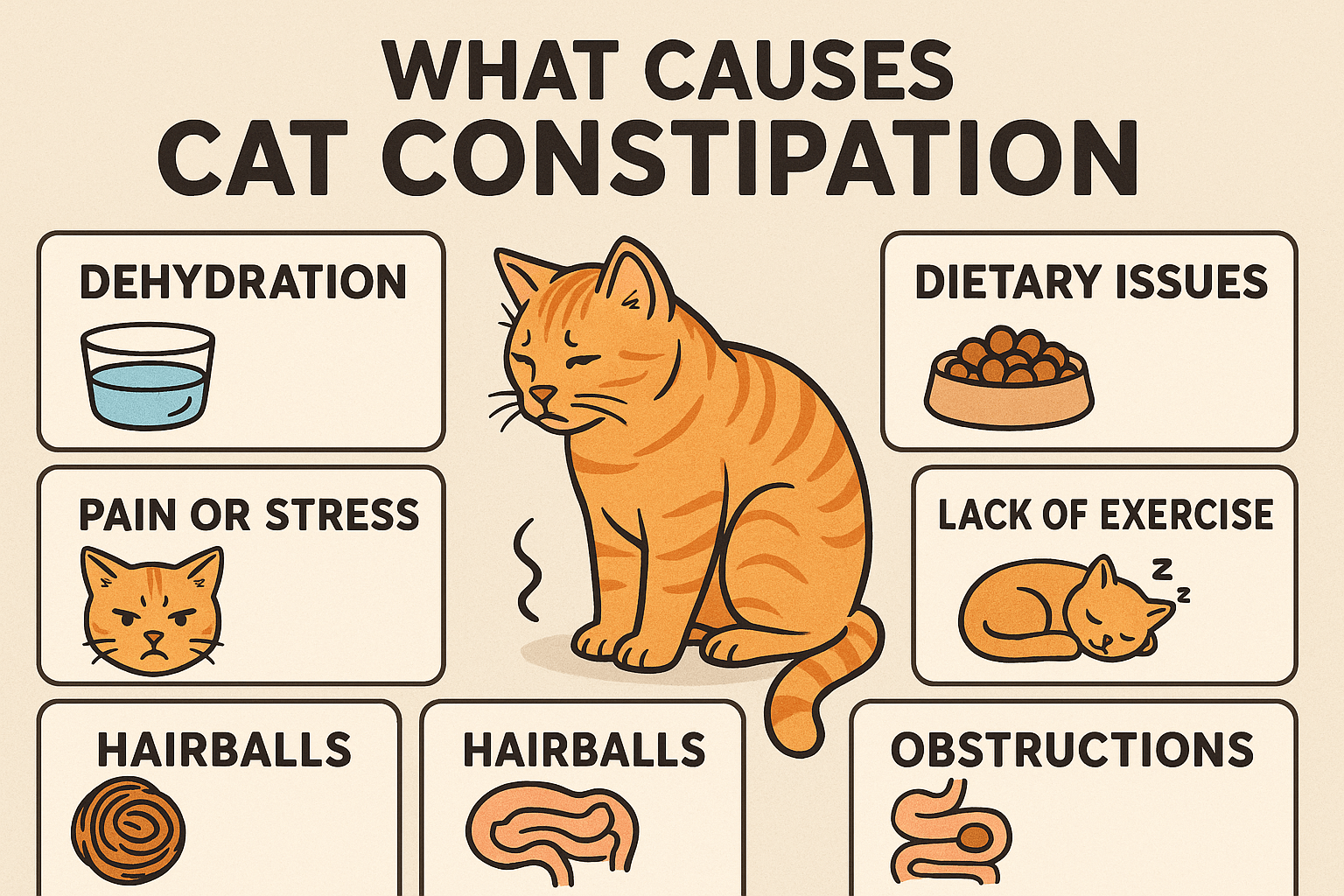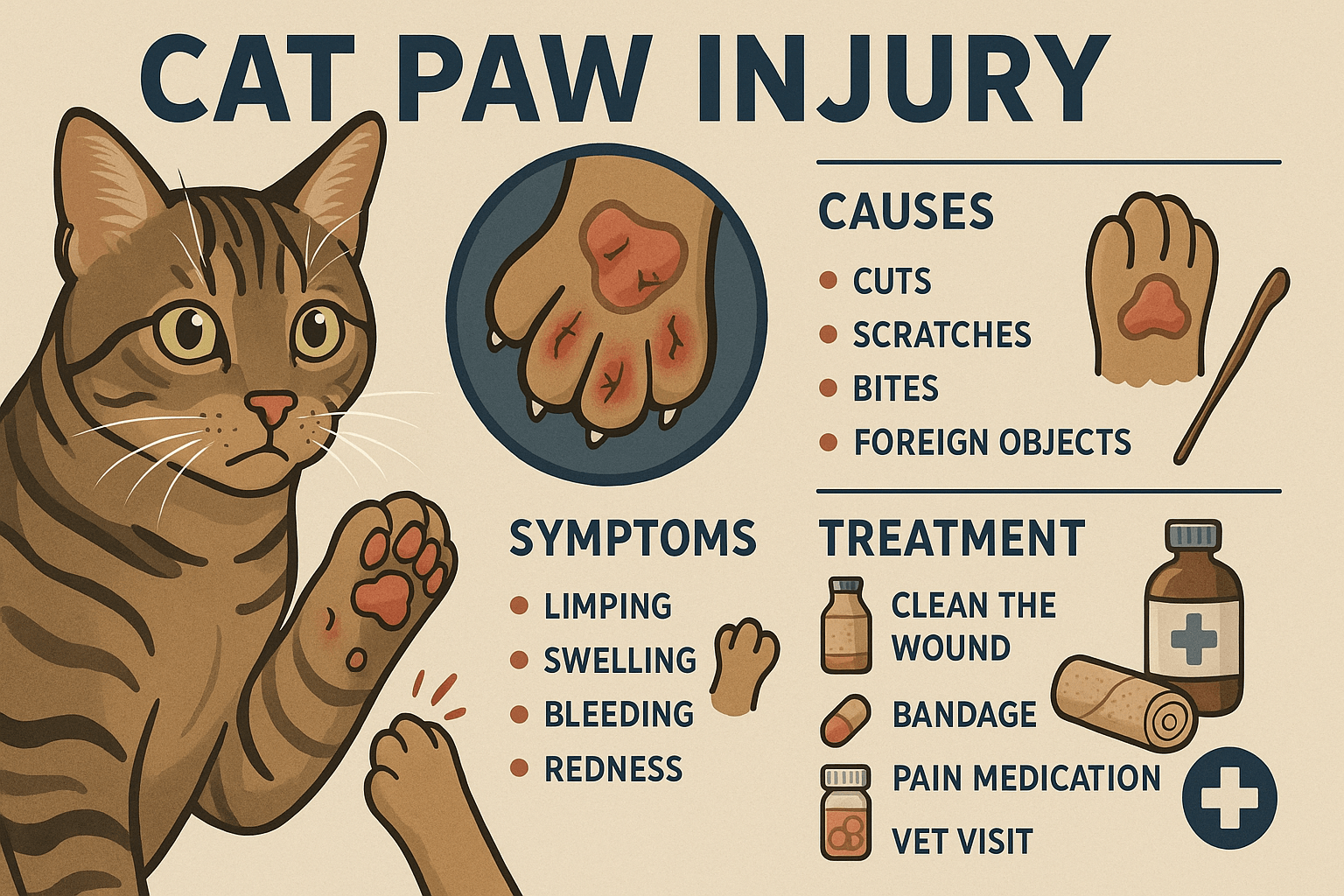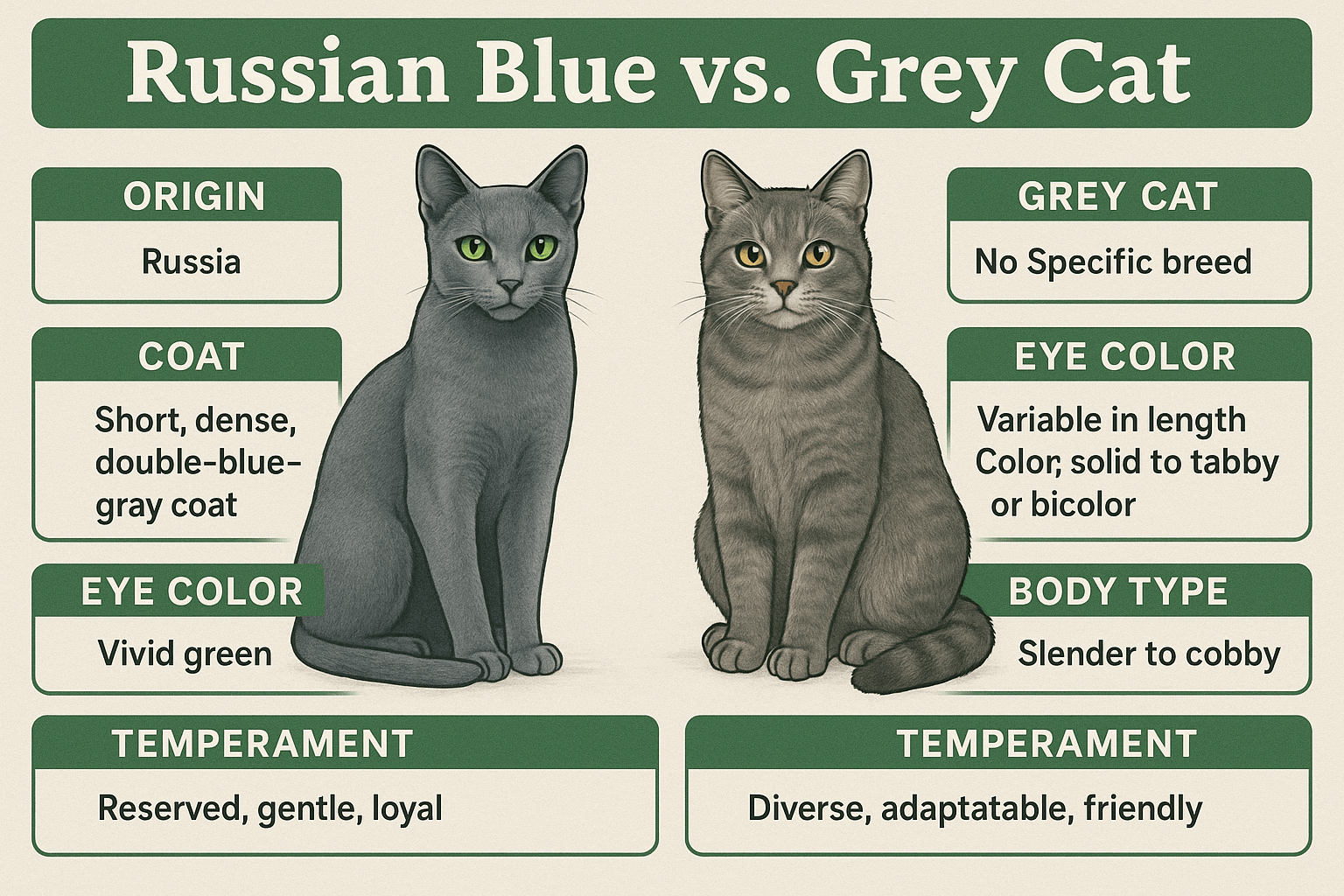Retinal Detachment in Cats: What You Need to Know
Retinal detachment is a serious condition that can affect your cat’s vision and overall quality of life. This occurs when the retina, the thin layer of tissue at the back of the eye responsible for processing light, separates from its underlying support. While this condition is relatively rare in cats, it is often linked to underlying health issues or trauma. Early detection and treatment are crucial to preserving your cat’s sight and addressing any contributing factors. In this blog post, we’ll explore the causes, symptoms, and treatment options for retinal detachment in cats, as well as tips for prevention and care. Understanding this condition will help you provide the best possible support for your feline friend.
Common Causes of Retinal Detachment in Cats
Retinal detachment doesn’t happen in isolation—it’s often the result of an underlying issue affecting your cat’s eye health. Identifying these potential causes is key to understanding the condition and seeking timely veterinary care.
Hypertension (High Blood Pressure):
High blood pressure can damage the delicate blood vessels in the eye, leading to retinal detachment. This is one of the most common causes in older cats.Trauma or Injury:
Physical injuries, such as blunt force or penetrating wounds, can cause the retina to detach. Outdoor cats are particularly vulnerable to accidents.Infections or Inflammation:
Conditions like uveitis (inflammation of the eye) can weaken the structures supporting the retina, increasing the risk of detachment.Genetic Predisposition:
Certain breeds, such as Abyssinians and Siamese cats, may be more prone to eye conditions that lead to retinal detachment.Tumors or Growths:
Abnormal growths within the eye can put pressure on the retina, causing it to separate from its normal position.
Understanding these causes highlights the importance of regular vet check-ups and monitoring your cat’s overall health to prevent complications.
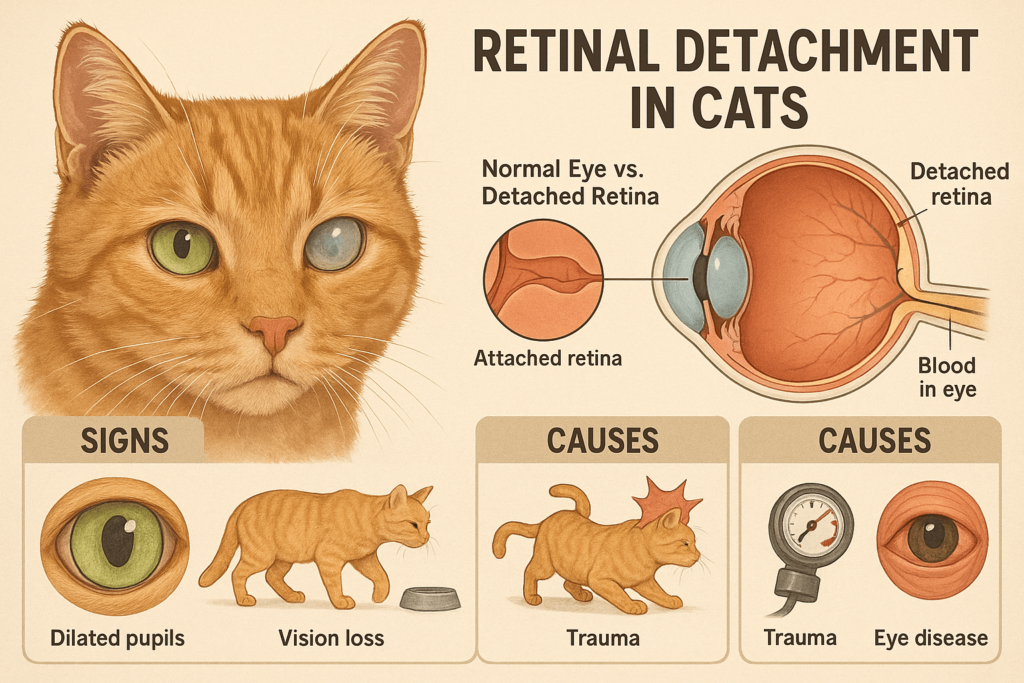
Signs and Symptoms of Retinal Detachment in Cats
Detecting retinal detachment early can make a significant difference in your cat’s prognosis. Look out for these warning signs that may indicate something is wrong with their vision.
Sudden Vision Loss:
Cats may appear disoriented, bump into objects, or struggle to navigate familiar spaces.Dilated or Unequal Pupils:
One or both pupils may appear larger than usual or fail to respond properly to light.Changes in Eye Appearance:
The affected eye may look cloudy, inflamed, or have a bluish-gray hue due to fluid buildup.Behavioral Changes:
A normally active cat may become withdrawn, hesitant, or reluctant to move around.Excessive Blinking or Squinting:
Your cat may squint frequently or avoid opening one eye due to discomfort or pain.
If you notice any of these symptoms, contact your veterinarian immediately. Early intervention can help preserve your cat’s vision and address underlying issues.
Check this guide 👉Understanding Cat Eyes Anatomy: Best 7 Expert Tips!
Check this guide 👉Common Cat Eye Problems: Best 7 Expert Tips!
Check this guide 👉How to Clean a Cat Eye Infection: Best 7 Health Tips!
Causes of Retinal Detachment | Symptoms to Watch For |
|---|---|
Hypertension (high blood pressure) | Sudden vision loss or blindness |
Trauma or injury to the eye | Dilated or unequal pupils |
Infections or inflammation (uveitis) | Cloudy or discolored eyes |
Genetic predisposition in certain breeds | Behavioral changes (e.g., hesitancy) |
Tumors or abnormal growths | Excessive blinking or squinting |
Treatment Options for Retinal Detachment in Cats
The treatment for retinal detachment depends on the underlying cause and the severity of the condition. While some cases can be managed successfully, others may require more intensive care.
Addressing Hypertension:
If high blood pressure is the culprit, medications like beta-blockers or ACE inhibitors may be prescribed to lower blood pressure and protect the eyes.Anti-Inflammatory Medications:
For cases caused by inflammation, corticosteroids or other anti-inflammatory drugs can reduce swelling and promote healing.Surgical Intervention:
In severe cases, surgery may be necessary to reattach the retina or remove tumors causing pressure on the eye.Treating Underlying Infections:
Antibiotics or antiviral medications may be used to treat infections contributing to retinal detachment.Monitoring and Follow-Up Care:
Regular check-ups with your veterinarian are essential to monitor progress and adjust treatment plans as needed.
With prompt and appropriate treatment, many cats can regain partial or full vision, improving their quality of life significantly.
Preventing Retinal Detachment in Cats
While not all cases of retinal detachment can be prevented, taking proactive steps can reduce the risk and ensure your cat stays healthy.
Regular Vet Check-Ups:
Routine exams allow your vet to detect early signs of hypertension, infections, or other conditions that could lead to retinal detachment.Managing Blood Pressure:
Senior cats, in particular, should have their blood pressure monitored regularly to catch hypertension early.Protecting Against Trauma:
Keep your cat indoors or supervise outdoor time to minimize the risk of injuries that could damage their eyes.Maintaining a Healthy Diet:
A balanced diet supports overall health, including eye health, and reduces the risk of systemic diseases.Watching for Behavioral Changes:
Pay attention to any unusual behaviors or changes in your cat’s habits, as these can signal underlying health problems.
By staying proactive and attentive, you can help safeguard your cat’s vision and overall well-being.
Understanding the Role of Nutrition in Eye Health
A cat’s diet plays a crucial role in maintaining their overall health, including the health of their eyes. Proper nutrition can help prevent conditions that contribute to retinal detachment.
Essential Fatty Acids:
Omega-3 fatty acids support eye health by reducing inflammation and promoting proper retinal function.Antioxidants:
Vitamins C and E, along with beta-carotene, protect the eyes from oxidative stress and cellular damage.Taurine-Rich Foods:
Taurine, an amino acid found in meat, is essential for feline eye health and prevents degenerative conditions.Hydration:
Adequate water intake supports circulation and helps maintain healthy tissues throughout the body, including the eyes.Avoiding Toxic Foods:
Certain foods, like onions or garlic, can harm cats and indirectly affect their eye health. Stick to species-appropriate diets.
Providing a balanced, nutritious diet sets the foundation for lifelong eye health in your cat.
Helping Your Cat Adapt to Vision Impairment
If your cat experiences partial or total vision loss due to retinal detachment, there are ways to help them adjust and continue living a fulfilling life.
Create a Safe Environment:
Remove obstacles and hazards from your home to prevent accidents and make navigation easier for your cat.Stick to a Routine:
Consistent feeding times, litter box locations, and sleeping areas help visually impaired cats feel secure.Use Scent Markers:
Placing scented items around the house can guide your cat and help them recognize important locations.Encourage Playtime:
Use toys with sounds or textures to engage your cat’s other senses and keep them mentally stimulated.Provide Emotional Support:
Spend quality time with your cat, offering reassurance and affection to boost their confidence.
With patience and care, your cat can adapt to vision loss and enjoy a happy, fulfilling life.
Recognizing Urgent Signs Requiring Immediate Attention
Some symptoms associated with retinal detachment warrant immediate veterinary intervention. Being aware of these red flags can save your cat’s vision and life.
Sudden Blindness:
If your cat loses vision abruptly, seek emergency care without delay. Time is critical for successful treatment.Severe Eye Pain:
Excessive pawing at the eyes, vocalization, or reluctance to open the eye indicates significant discomfort requiring urgent attention.Bleeding or Discharge:
Any sign of blood, pus, or unusual discharge from the eye demands professional evaluation.Swelling Around the Eye:
Significant swelling may indicate trauma, infection, or another serious condition needing prompt care.Unresponsiveness to Light:
If your cat’s pupils do not react to light, it could signal severe damage to the retina or optic nerve.
Acting quickly ensures your cat receives the care they need to address potentially life-threatening issues.
Frequently Asked Questions About Retinal Detachment in Cats
Can retinal detachment in cats be cured?
In some cases, yes—especially if treated early. However, success depends on the cause and severity of the condition.
How quickly should I seek veterinary care?
Immediate action is critical. Delayed treatment increases the risk of permanent vision loss.
Is retinal detachment painful for cats?
It may cause discomfort or pain, especially if accompanied by inflammation or trauma.
Are certain breeds more prone to this condition?
Yes, breeds like Abyssinians and Siamese cats may have a higher risk due to genetic predispositions.
What happens if my cat loses vision permanently?
Cats adapt remarkably well to blindness, relying on their other senses to navigate their environment.
Supporting Your Cat Through Retinal Detachment
Retinal detachment is a challenging condition, but with early detection, proper treatment, and ongoing care, many cats can recover or adapt successfully. As a responsible pet owner, staying informed about your cat’s health and recognizing the signs of potential issues is vital. By working closely with your veterinarian and providing a safe, loving environment, you can ensure your feline companion continues to thrive, even in the face of adversity. Remember, your vigilance and dedication are the keys to protecting your cat’s precious vision.
What Causes Cat Constipation? Best 7 Expert Tips! Discover common causes, symptoms, and solutions for cat constipation to keep your feline healthy and comfortable.
Cat Paw Injury: Best 7 Expert Tips! Discover essential advice on identifying, treating, and preventing cat paw injuries to keep your feline friend healthy and happy.
Retinal Detachment in Cats: Best 7 Expert Tips! Learn to identify symptoms, understand causes, and explore treatment options to protect your cat’s vision effectively.
Russian Blue vs Grey Cat: Best 7 Expert Tips! Discover key differences, unique traits, and expert advice to help you choose between a Russian Blue and a generic grey cat for your perfect feline companion.

